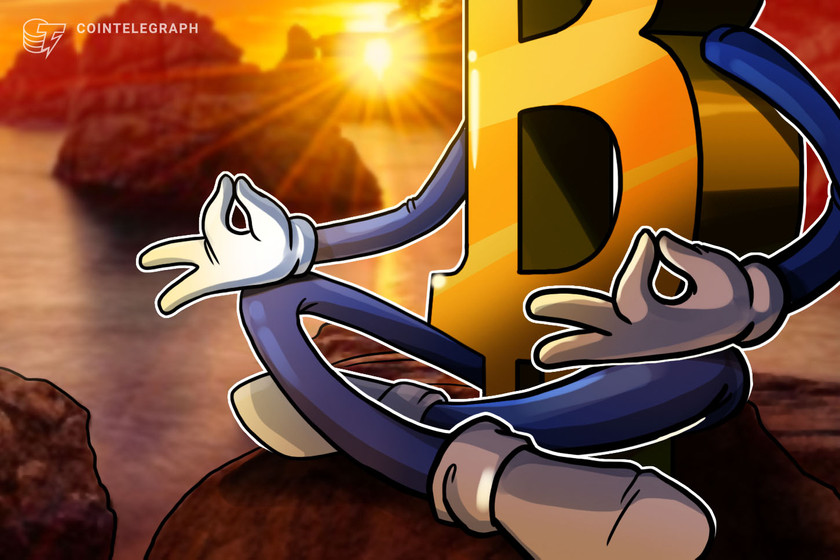DeFi Vs. Legacy Finance: Solving Old Issues Brings New Complexities
Decentralized finance has become one of the hot topics in crypto this year. Although activity and volume in the DeFi space still lag behind its popularity, this is starting to change as novel protocols become available. In fact, according to a recent report by Consensys, the amount of Ether (ETH) locked and active users on DeFi platforms has soared after being “fairly stagnant” during the rest of the year due to Compound’s release.
DeFi tokens have also been the topic of much discussion, as they have outperformed Bitcoin in the price charts week after week. In fact, Compound’s COMP token rose 233% in its first week of trading, and Aave’s LEND token has surged 1,000% in the last three months. As such, an obvious comparison between decentralized finance and centralized finance can emerge. Centralized systems have their advantages and disadvantages, and it is likely that, even if DeFi takes off, both types of financial products and services will always be available to the masses.
Here is a closer look at some of the advantages, disadvantages, challenges and problems of each counterpart of the financial world — centralized and decentralized. The focus will be specifically on decentralized lending and borrowing, which is currently one of the most popular applications for DeFi in terms of volume/value locked and has, in a sense, sparked the hype around the larger concept of DeFi.
What is DeFi and traditional finance?
DeFi is a group of blockchain-based financial services and products that mimic the ones people have grown accustomed to in legacy finance, but do so with no centralized party to provide said services. Instead, these are provided by other users that act as financial counterparts with no middlemen involved.
These financial products range from popular credit and lending services and decentralized exchanges to stablecoins, insurance, payments and custodial services, and more — but mainly, it’s the first application that has propelled DeFi’s popularity. According to Jon Jordan, communications director of DappRadar, DeFi protocols have the ability to learn, adapt and evolve from each other, which is one of the reasons decentralized finance is moving so quickly. He told Cointelegraph:
“Because DeFi runs on an open permissionless blockchain, interoperability of dapps and tokens is a massive advantage. One dapp can come up with a new feature — such as flash loans — and then other dapps can integrate that into their product without asking permission. This interoperability has been the underlying reason for the current Yield Farming explosion, for example.”
Services such as MakerDAO, Aave and Compound, among others, all provide the lending and credit services that traditional banks do, but with a few differences — both potentially good and bad. These lending and credit services are similar to each other and even to the centralized services they emulate; however, the inner workings of each project are often very different from those of legacy services.
DeFi runs without a central authority?
There are different types of lending and credit platforms within the DeFi space, most of which make use of the Ethereum blockchain. These projects employ different strategies to allow users to borrow from and lend to each other with no central entity involved. This means that Know Your Customer identification or paperwork is not required. While there is less bureaucracy and control, it still ensures a certain amount of security for the lender and their funds. Stani Kulechov, CEO of Aave, told Cointelegraph:
“The biggest advantages of DeFi is that its permissionless to participate (no KYC, credit score, etc.), same rules apply to everyone, liquidity is ’borderless’ (you can access the market from anywhere & anytime as long as you have internet), and it’s non-custodial so you have full control over your money and you can use it however you want.”
Aave, for example, uses a pool-based strategy where lenders provide liquidity by depositing Ether or ERC-20 tokens into a pool contract. This makes it possible to earn interest or even to use the funds deposited as collateral to borrow an asset. As a result, users get a short-term credit line for stablecoins or other tokens without having to liquidate their assets.
On the other hand, MakerDAO allows users to acquire its stablecoin, Dai, by locking up their ETH, although users need to deposit more Ether than they can withdraw, at a rate that can vary. This allows MakerDAO to maintain Dai’s peg to the United States dollar, as it is backed by more than it’s worth in ETH, which in turn protects the protocol from accentuated volatility in Ether.
Lastly, Compound uses a similar model as Aave, although it has a fairly unique reward mechanism that has led to the creation of yield farming, where governance tokens are rewarded to lenders and borrowers on top of the given interest.
DeFi protocols have varying interest rates, with some reaching double-digit figures, while banks generally offer less than 1% when depositing funds. Furthermore, traditional finance requires documentation and credit scores. However, legacy finance also allows for different types of collateralization, especially with different assets such as homes. However, tokenization could soon change this, as tokens that represent a house, or part of a house, could be plugged into a DeFi protocol — although this is still theoretical for the time being.
KYC, AML, privacy and accessibility
Since DeFi users can interact with financial services without KYC and identification documents, the industry opens up an immense realm of possibilities for emerging economies. As of 2017, 1.7 billion adults worldwide remain unbanked, according to Global Findex. Although underdeveloped countries would benefit the most from DeFi, the unbanked or underbanked population spans to developed countries as well.
Kulechov told Cointelegraph: “DeFi is accessible to everyone everywhere, as long as you have an internet connection, so lots of people who may not have access to banking resources can now lend and borrow.” However, while the open-doors policy of DeFi has its advantages, it also means that illicit money can circulate through the platforms without any Anti-Money Laundering measures. With this in mind, regulation may soon be one of the biggest challenges in the DeFi space.
In terms of accessibility, DeFi has made it easier for its users, with platforms being open to anyone who wishes to join, although doing so still requires some level of technical understanding. On the other hand, opening up a bank account actually requires no equipment or prior knowledge; but even then, many cannot do so because of the paperwork or inability to qualify for a product such as a loan. In some extreme cases, people can’t even reach a brick-and-mortar location, which is required to open an account to begin with.
Security and centralization
So, how do DeFi platforms fare against legacy finance when it comes to security? There is much to consider when addressing this question. Banks can be hacked, but since transactions can be canceled and reversed, this usually only results in the leak of private financial information, which is, of course, quite damaging for those affected. In DeFi, all information is already public, given that all transactions are recorded on the blockchain, which is generally harmless given that said information is pseudonymous.
When it comes to DeFi, there’s a thin line between security and decentralization. Protocols like Aave and MakerDAO are, in theory, “unhackable,” as they do not rely on centralized servers that act as single attack vectors but rather on distributed nodes that are impossible to target individually without a 51% attack on Ethereum.
However, the underlying blockchain on which these protocols are built is not the only thing to look out for, and unlike with banks, if there’s an issue with an account, there’s nobody to freeze or reverse transactions. Ultimately, the code of said protocols can be flawed and lead to exploits if not properly audited. Such was the case with the infamous project The Dao, more recently with Balancer — which was hacked, losing over $500,000 — and with the theft of $25 million from dForce, although the hacker has since returned the funds.
Scalability, usability and liquidity
While the aforementioned projects are live, there are still some constraints when it comes to usability. For example, most platforms aren’t translated into multiple languages, which can make them hard to access, and they also require a certain degree of technical knowledge that some people simply do not have. Moreover, these DeFi protocols also require an Ethereum wallet and some tokens, which will usually require some form of banking to acquire. As such, DeFi is not as accessible in practice as it is in theory, at least for now. Kulechov added:
“A big challenge for DeFi is education — onboarding people to DeFi can be difficult, but new educational resources are coming out all the time which is great. Going forward though, education on not only how to use different decentralized applications but also security and risk is important.”
When it comes to liquidity, there is no doubt that old finance is king. DeFi is a novel concept, so it’s not extremely popular outside of the crypto realm. This means that there is almost no liquidity when it comes to these projects. Compound recently hit a major milestone with more than $1 billion in funds borrowed, and it currently has around $1.6 billion in locked funds. Aave has more than $200 million in locked funds. While DeFi is making progress, it doesn’t compare to the size of traditional finance. Lack of liquidity can, of course, make it harder for users to get a loan or interest on a specific asset.
Also, the current congestion and scalability issues of Ethereum may soon hinder the use of DeFi. Fees can be extremely high and transactions can take a long time to process if there is congestion on the network. Although there are layer-two solutions available now, Ethereum 2.0 will still take years to fully develop and implement. Moreover, the lack of scalability can lead to future issues, and it poses a looming danger for DeFi projects and users alike. Dmitry Baimuratov, technical content lead of the OMG Network — a layer-two scalability project for Ethereum — told Cointelegraph:
“DeFi has become the major ecosystem player over the last year. The volume and interest are only growing, especially from traditional financial institutions and funds. Thus scaling solutions are even more important to deliver the required user experience for DeFi customers while the Ethereum 2.0 is still under development.”
Yes, maybe or no?
As seen above, there are advantages and disadvantages in both systems. While some of these, such as liquidity and scalability, can be solved for DeFi, there are intrinsic setbacks including the lack of KYC and dispute settlement processes that can only be provided with the help of a central entity that mediates between parties.
With this being said, can DeFi overtake the traditional finance model in the future? It is possible that one will replace the other, but rather what’s more plausible is that the two concepts will coexist and serve different needs and client bases. As Kulechov told Cointelegraph, compatibility with traditional finance systems is likely to be a major milestone for DeFi: “I think DeFi will become more interoperable with ’OldFi.’ New innovations, like credit delegation, position DeFi to be a source of liquidity for all of finance.”









